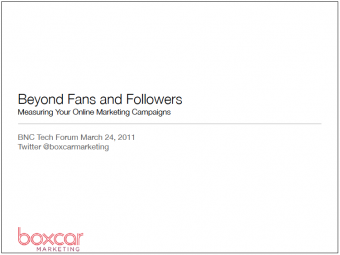Analytics data can be overwhelming. One way to get the most out of your data is to use analytics to monitor how your site is performing and what to optimize.
Here are 3 Google Analytics tools you can use to discover how to improve your site. (And if you don’t have Google Analytics installed on your website, install it, it’s free.)
1. Annotations
Anytime you undertake a marketing activity you should annotate it to see what effect it has on your website. Understanding what impact certain marketing activities have on traffic and traffic behaviours on your site gives you an opportunity to optimize and improve.
If blog posts that offer customer support cause a spike in traffic, for example, you know to optimize your blog with these types of posts.
2. Goal Funnels
Goals funnels monitor tasks on your site that require traffic to go through a specific path—such as email newsletter signup or ecommerce through a shopping cart. Monitoring these paths gives you insight into what’s working and what’s not working.
For example, you can monitor where on a path people are stopping. If people are dropping off at your newsletter signup form, is it because the form is too long? Is it confusing?
Figuring out why people don’t complete a goal allows you to go back and optimize that goal path.
3. Advanced Segments
Advanced Segments are useful for comparing what different audience groups do on your site and how to optimize for these audiences.
For example, you can compare how referral traffic from different sources behave on your site.
If Twitter traffic is more likely to sign up for your newsletter than Facebook traffic, figure out how you can optimize for Facebook. Is the newsletter signup clear on the pages that Facebook traffic lands on? Is the language similar to the language used on Facebook?
Understanding why traffic is behaving in a certain way allows you to go back and optimize for that traffic.
How to use Google’s Advanced Segments.
________________________
Learn what to monitor in analytics to improve your website’s usability.
For more information on measuring online marketing campaigns, watch Monique’s slides from BookNet Canada’s Tech Forum.
UPDATE
Here’s the audio version of Monique’s BookNet Canada Tech Forum presentation:



